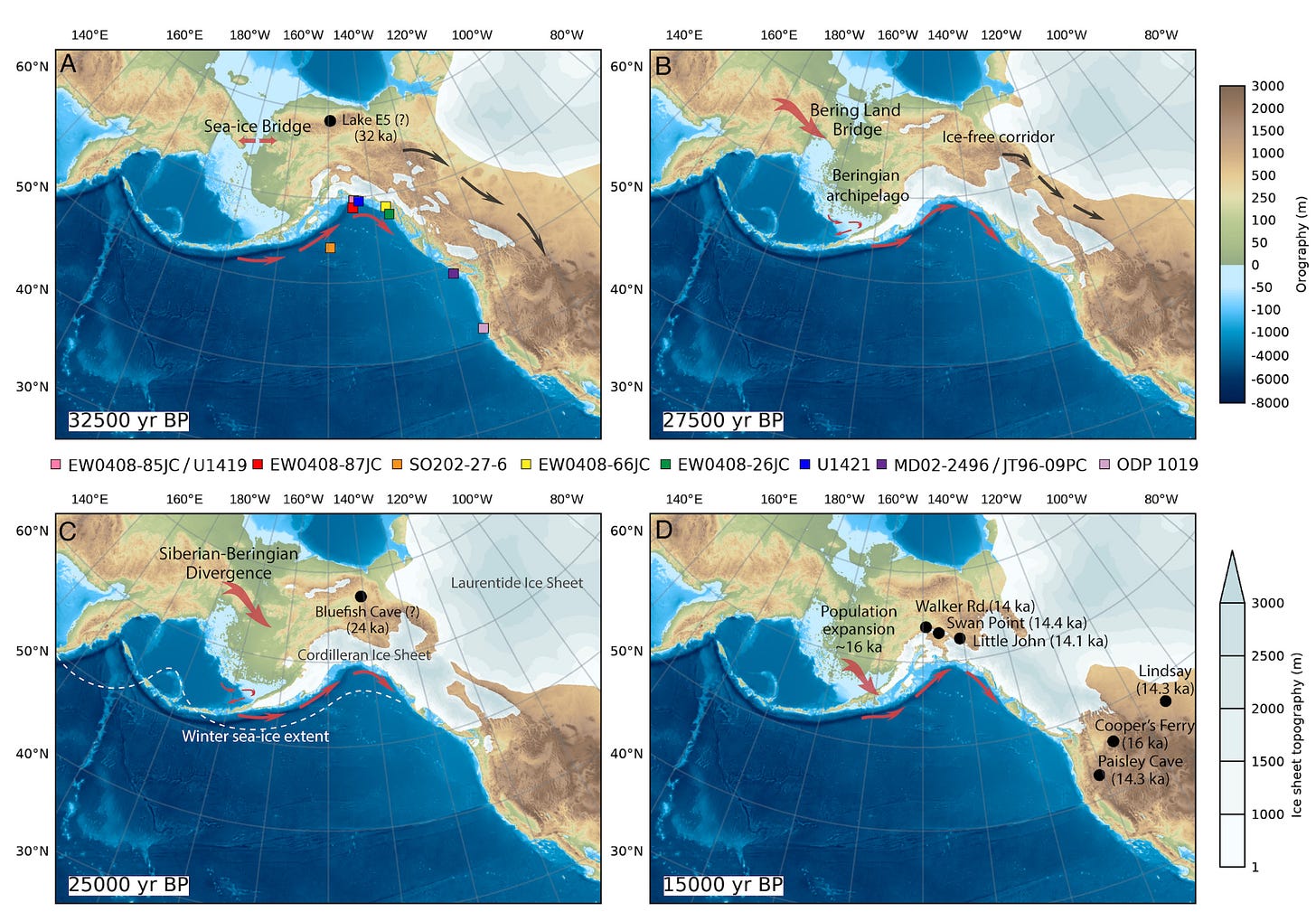The Bering Land Bridge Was Accessible Only During Two Short Periods of Time
During these two times, the Bering Strait Land Bridge may have served as the coastal route used by the first people to reach the Americas.
According to a new study in the journal Proceedings of the National Academy of Sciences1 the coastal route between Asia and North America was so perilous during the last ice age, humans probably only crossed during two time windows, when the environmental conditions were more suited for the exhausting and deadly trek.
The first window lasted from 24,500 to 22,000 years ago, and the other one covered from 16,400 to 14,800 years ago. The researchers added that during these times, sea ice cover in the winter and sea ice-free summers would have likely provided these migrants with access to a varied marine buffet as well as means of traveling safely around the North Pacific coast.
There are two basic hypotheses about the origins of human migration to the New World.
According to an earlier theory, people traveled across Beringia, the land bridge that previously united Asia and North America, on foot when there wasn't much ice.
A rising collection of evidence, however, indicates that people may have utilized boats throughout the Pacific coasts of Asia, Beringia, and North America before 15,000 years ago, a time when enormous ice sheets would have made an overland journey extremely challenging.
Researchers examined how variations in temperature over the previous 45,000 years would have affected sea ice, glacier area, ocean current strength, and food availability on land and at sea in order to determine how feasible the coastal path may have been for migration at various times. Using data from previously collected soil samples from the Gulf of Alaska that contained information on surface temperatures, salinity, and debris carried on ice, the researchers created climate models based on oscillations in sea ice.
Their simulations identified two temporal windows for year-round coastal migration, the first 2,500 years and the second 1,600 years, which would have allowed a suitable coastal route when the inland route was blocked.
Keep reading with a 7-day free trial
Subscribe to Anthropology.net to keep reading this post and get 7 days of free access to the full post archives.

